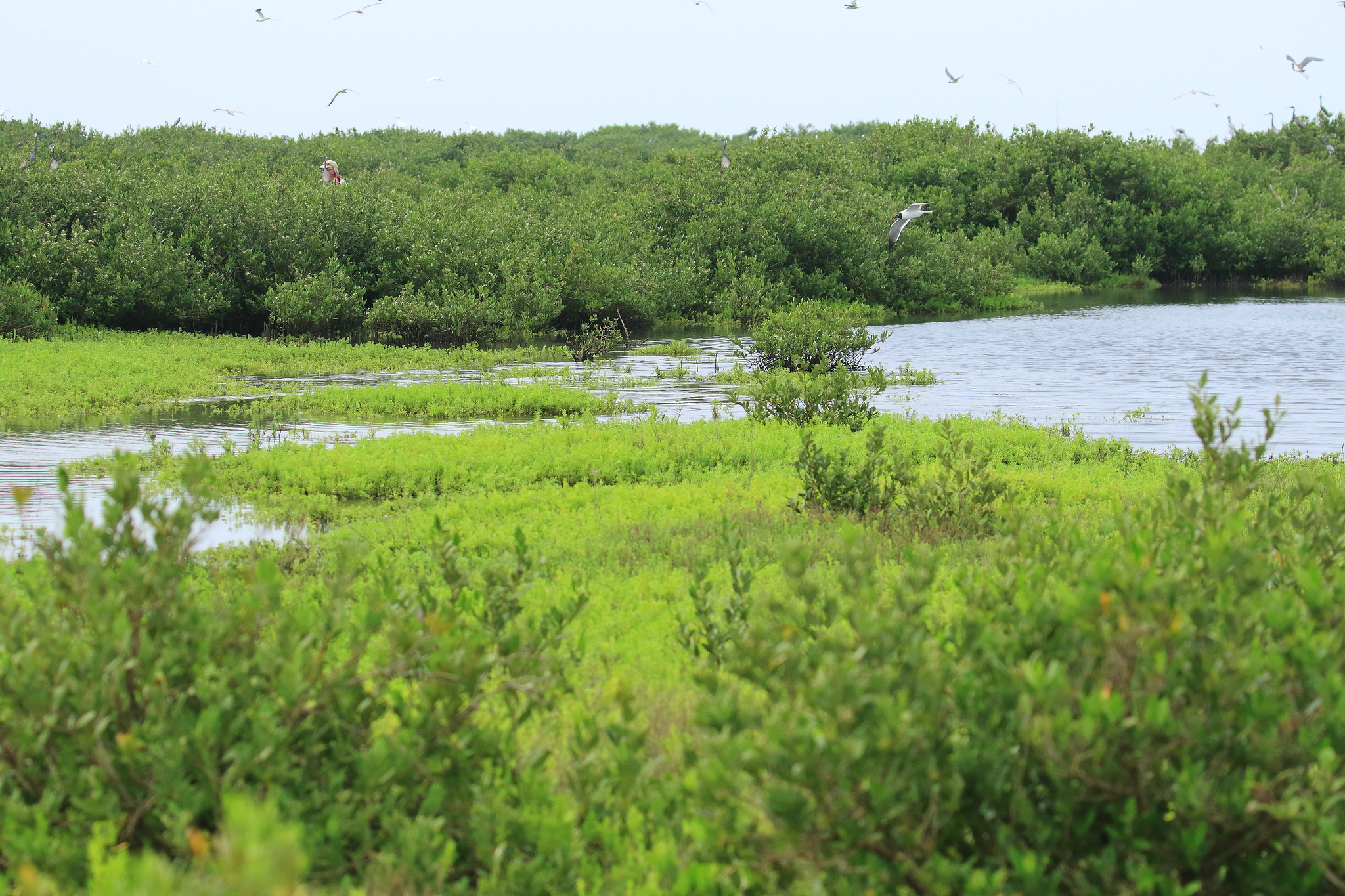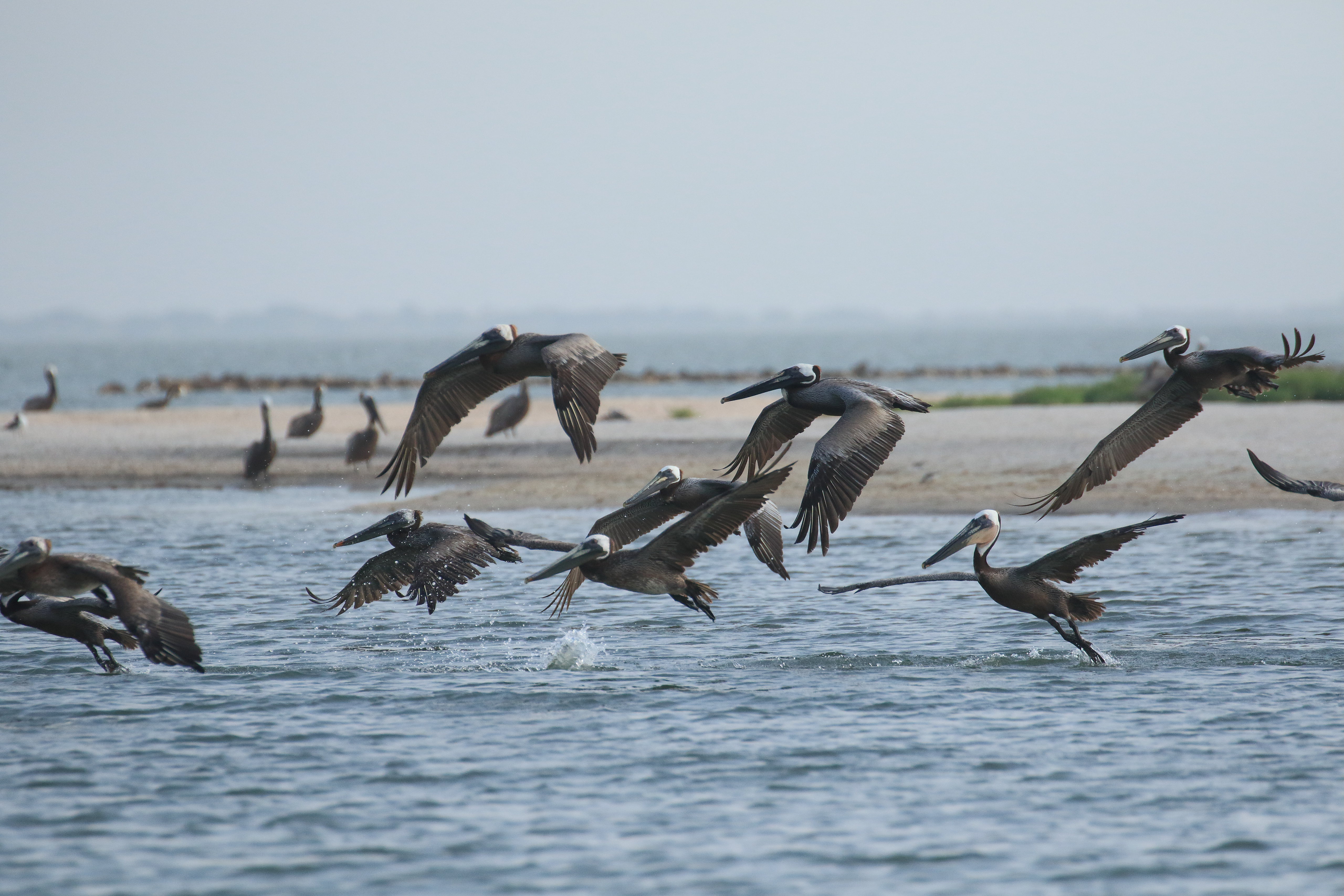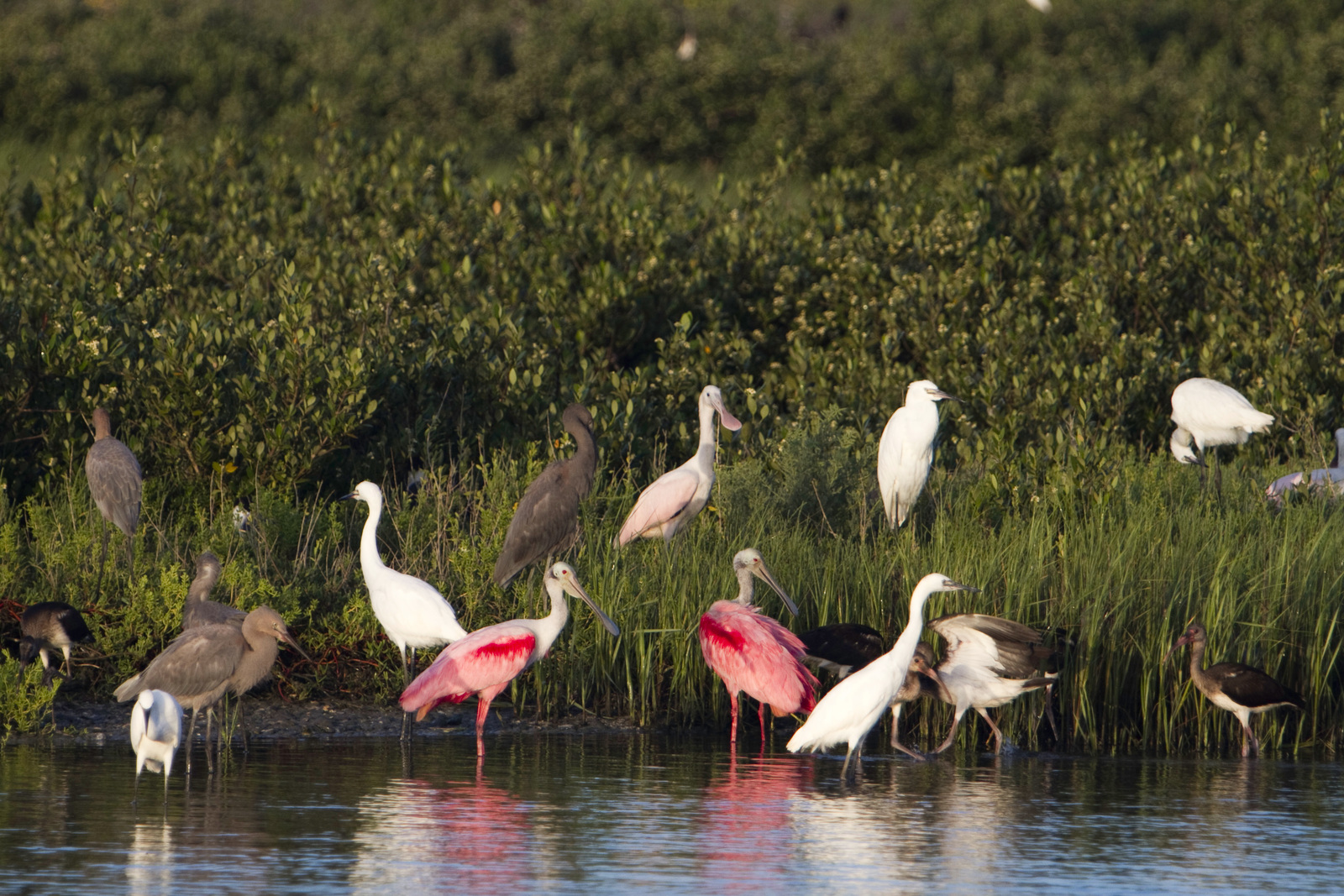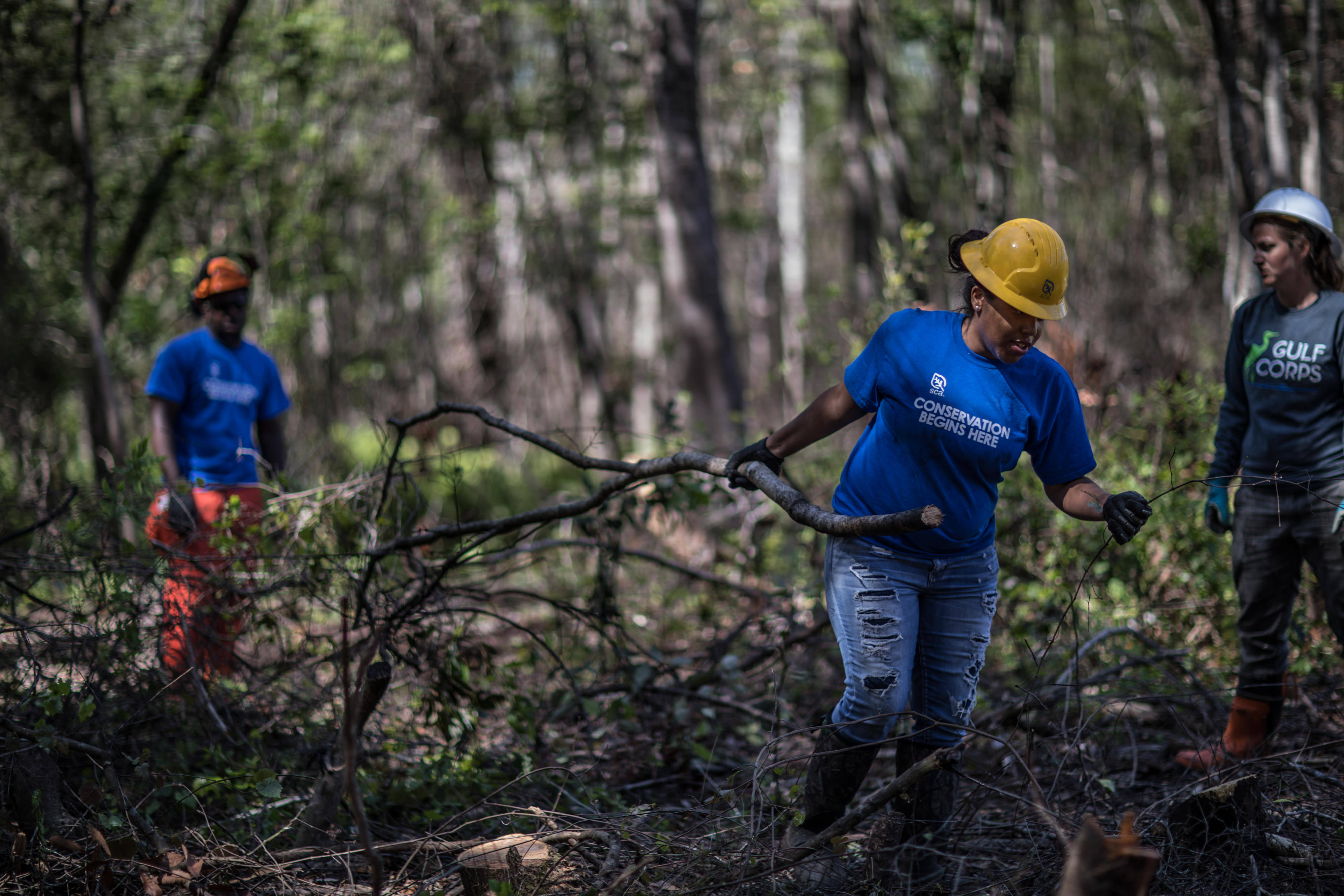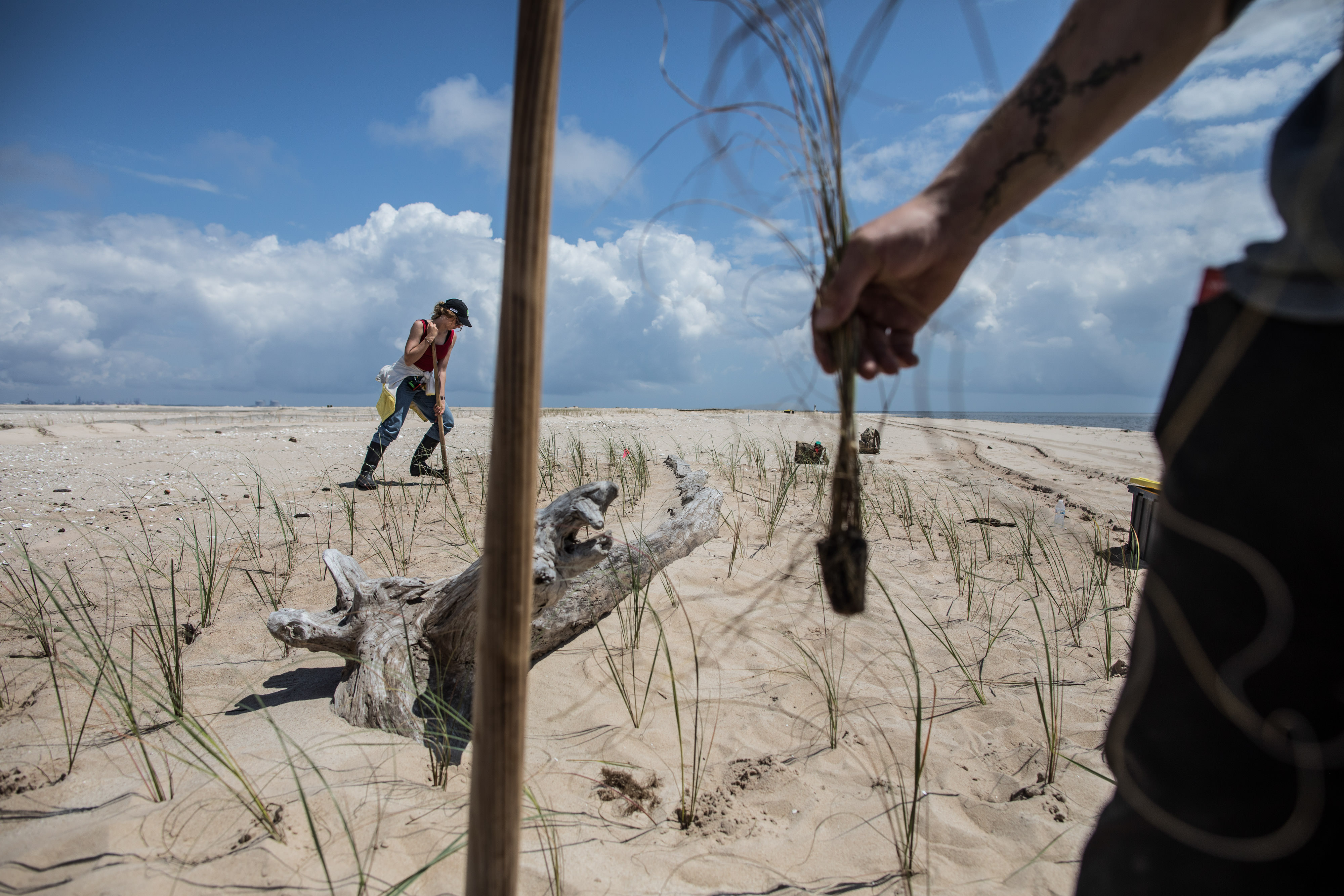Shamrock Island Bird Rookery
One of the most important bird breeding sites in the Gulf is threatened by erosion.
Shamrock Island Preserve, near Corpus Christi, is one of the most important bird rookeries in the Gulf. But it wasn’t always that way. Throughout most of its history, Shamrock Island was actually a robust peninsula that extended from the northwest end of Mustang Island, an 18-mile barrier island that stretches from Corpus Christi to Port Aransas. While it was significantly larger than the Shamrock we know today, it made for a pretty poor rookery.
Shamrock Island's connection to the mainland led birds to nest elsewhere, as both human disturbances and predator access would have been incredibly high on the peninsula. But a couple of events changed all of that. In the 1950s, a series of navigational channels were carved into the landmass, which weakened the entire peninsula. Twenty years later, Hurricane Celia tore across the landscape and permanently severed the land connection. Since then, Shamrock Island's birds have thrived.

Erosion Without Natural Sand Replenishment
Mother Nature is affecting Shamrock in a new way now—this leading bird colony is disappearing. Erosion steals between five and 14 feet of the island’s southwest shoreline every year. When Hurricane Celia severed the land bridge between Shamrock and Mustang Island, it destroyed the one thing a healthy beach needs: a renewable source of sand.
Typically during a storm, waves break against the shoreline and pull sand underwater. That submerged sand forms a sandbar that protects and supports the beach. During calm weather, smaller waves bring particles of that submerged sand back up to the surface and deposit them onto the beach.
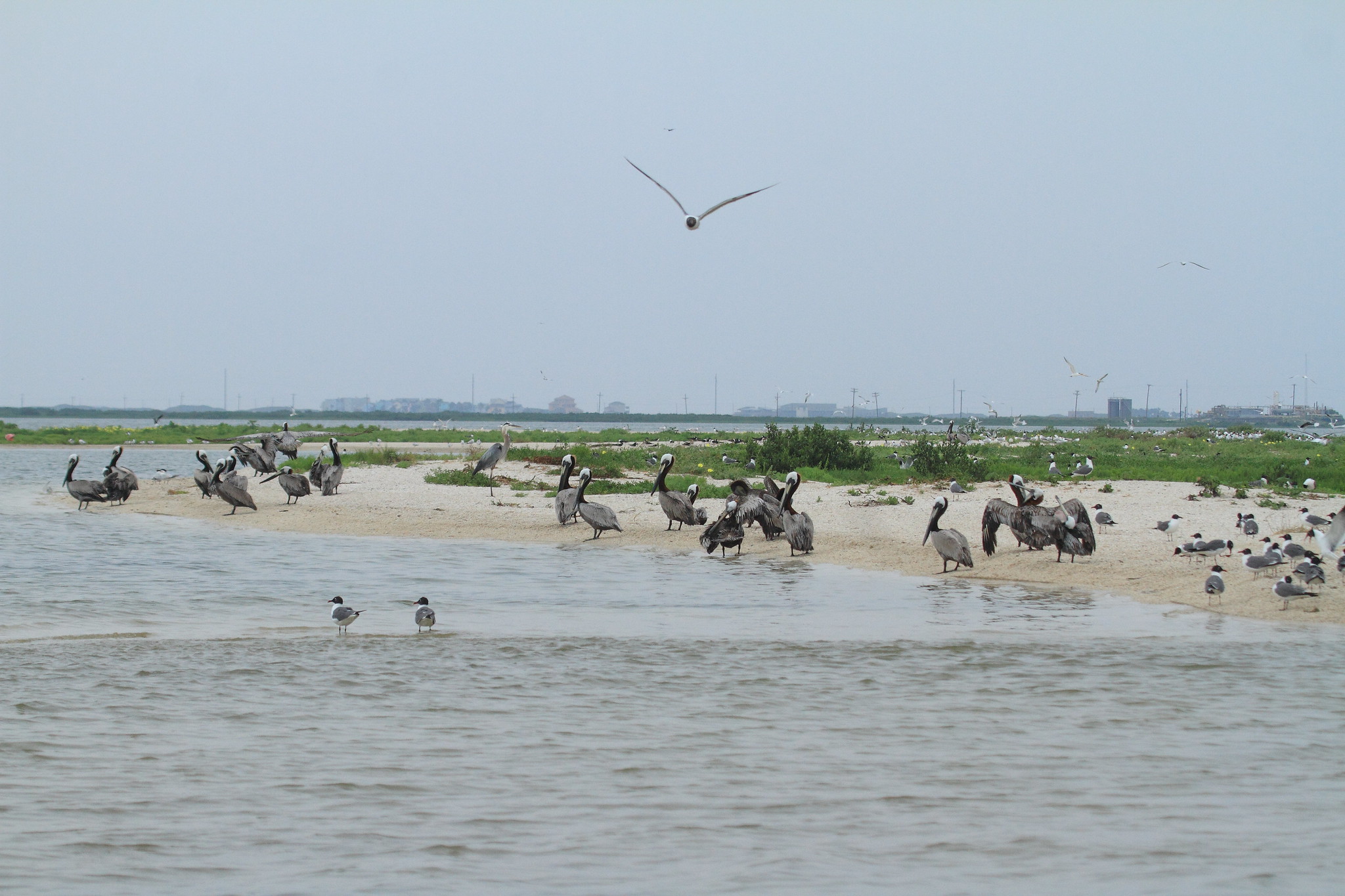
But Shamrock lacks that underwater sandbar. When storms occur, there is no natural system to replenish the sand that is carried away. And that could spell disaster for the species nesting there and the future of wildlife research in the Gulf.
Studying Brown Pelican Colonies
Juliet Lamb is a doctoral student at Clemson University—and by the time she receives her degree, she will have notched around a half-dozen visits to Shamrock Island, all to gauge the health and wellbeing of the brown pelican. She is researching the effects of oil and gas production on the Gulf's brown pelican population. Shamrock is one of eight rookeries she’s monitoring between Texas, Louisiana and Florida.
“Shamrock is important because there are so few breeding colonies available along the Texas coast,” Lamb said. “Outside of Corpus Christi Bay, [one of] the only other nesting colonies for brown pelicans is Chester Island in Matagorda Bay, which is also losing land area to erosion. These two islands together support about half the breeding pelicans on the Texas coast.”

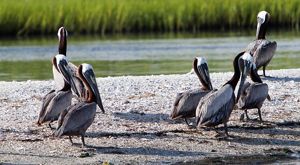
Galveston Bay’s North Deer Island and Marker 52 Spoil Island support the other half—all together, these four islands are home to more than a thousand pairs of breeding brown pelicans, Lamb said.
Though Shamrock isn’t the largest of the islands Lamb is monitoring, its geographical position arguably makes it the most successful. “Most of the brown pelican population breeds in Louisiana, where contamination levels are higher and the threat of oil spills is greater,” she explained.
“Shamrock, being the southernmost colony and near Padre Island, is sheltered from potential oil spills and close to pristine foraging habitat. Colonies like [it] can provide refuges that help the regional population to persist through catastrophic events.”
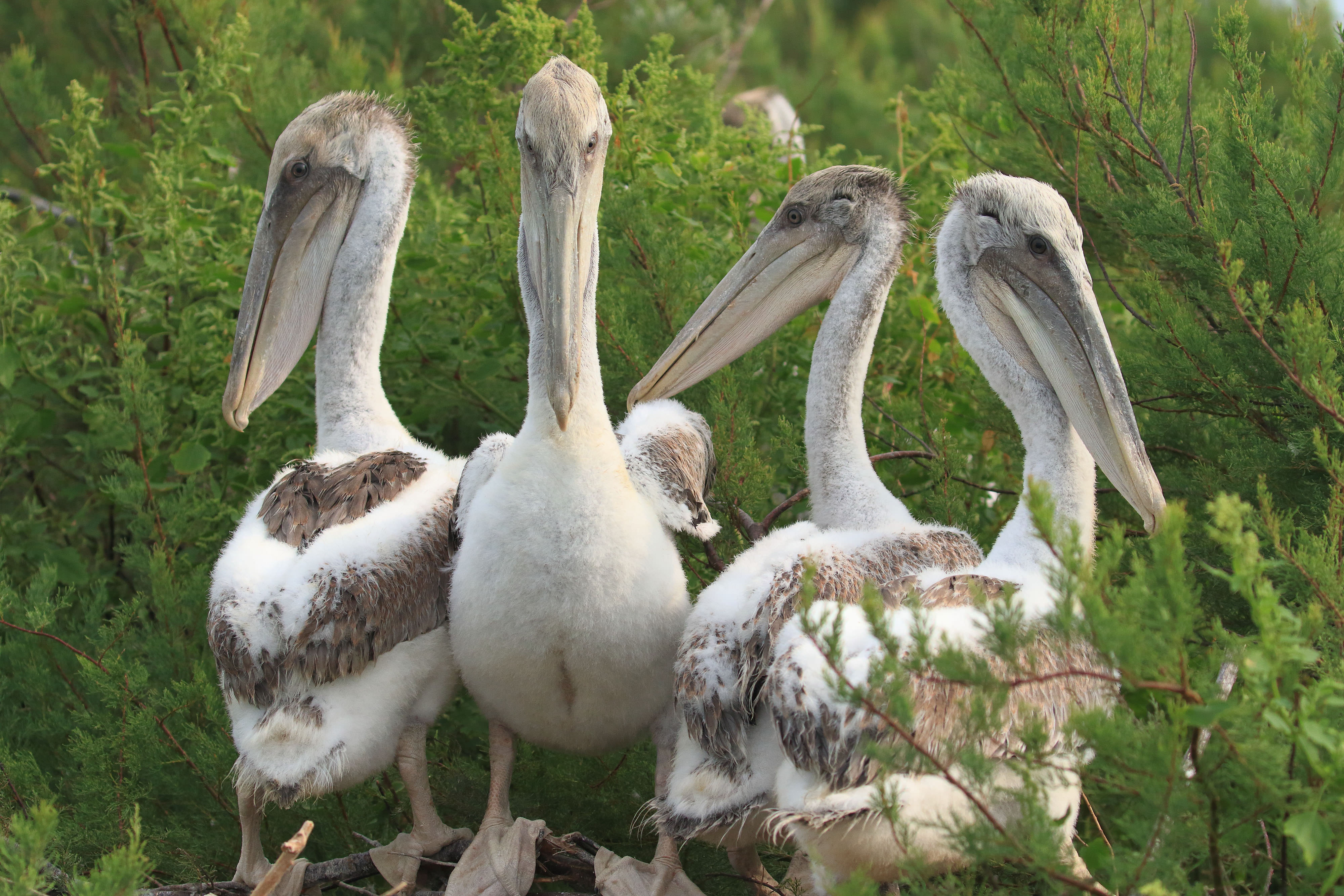
Building Breakwaters to Protect Shamrock Island
So, what’s the key to preserving Shamrock? TNC has placed its biggest bets on breakwaters, which protect from erosion. The reinforced rock walls slow waves as they roll in, which allows sediment to fall from the water and settle, creating excellent seagrass habitat. That seagrass then helps anchor sand and sediment to the ocean floor to keep underwater erosion in check.
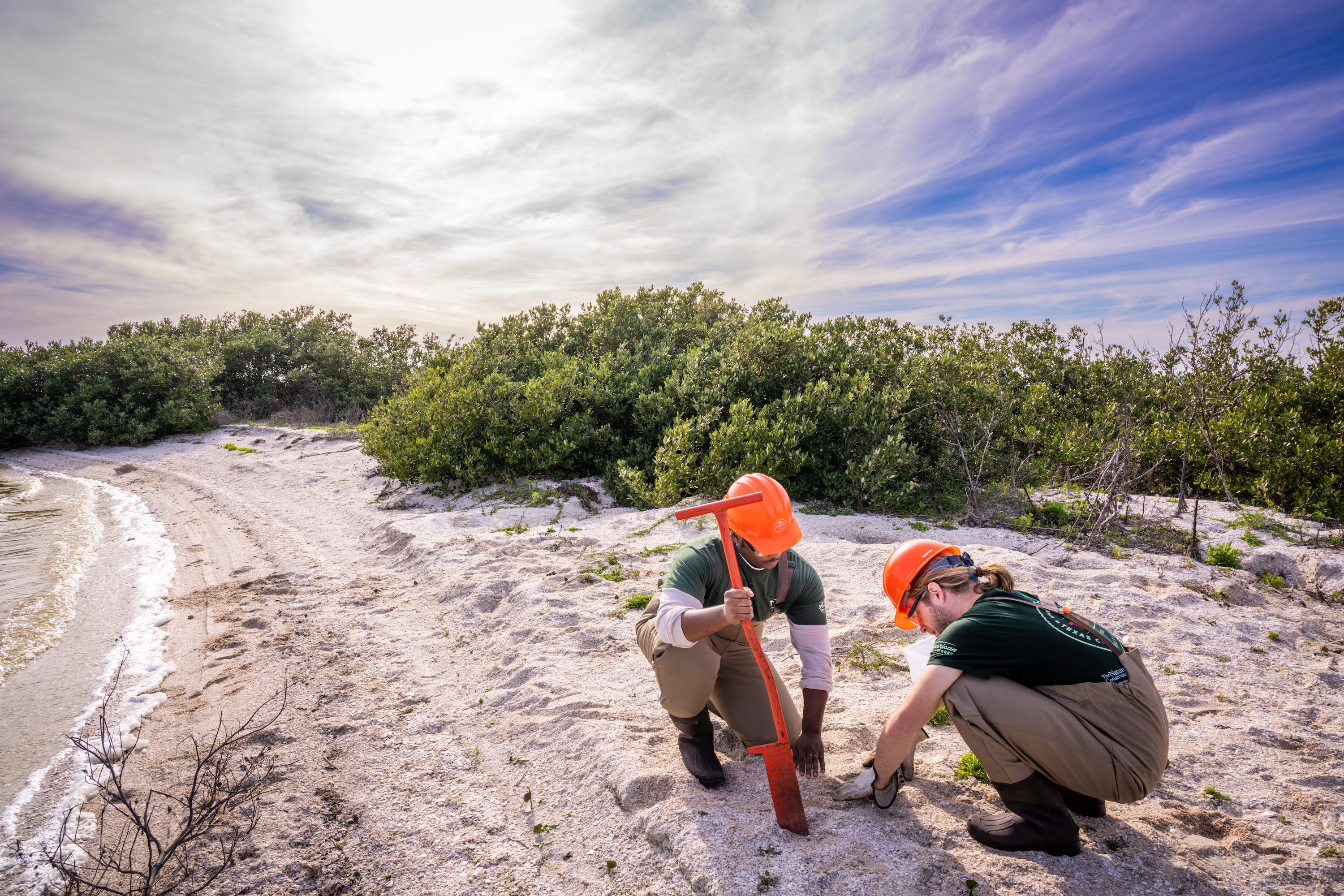
A total of 27 breakwaters have been built around Shamrock since 2005, and the results are encouraging. Installing just three more could reduce erosion by nearly 80%—though nature is resilient, sometimes it needs our help to thrive. Conservation efforts past, present and future will help make sure Shamrock Island is here to stay.
We Can’t Save Nature Without You
Sign up to receive monthly conservation news and updates from Texas. Get a preview of Texas's Nature News email.
